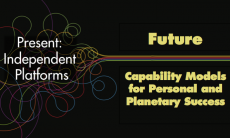It’s a brave new world for marketers. When I started in this business, it would have been hard to find two teams with less in common than the IT team and the marketing team. Not only were they extremely different kinds of people, but they rarely had any reason to work together. But today, no marketer can work without dozens of software tools, regardless of whether they are involved in online or offline marketing. That turn of events has placed a new burden on marketers that few might have predicted a few years ago: Marketers must understand the software ecosystem–the software tools and companies that revolve around IBM, Microsoft, Oracle, and other behemoths that affect the right tools to work with.
This was all brought to mind for me as I watched with interest as Salesforce.com acquired Radian6 yesterday. [Full disclosure: I serve as Chief Strategist for Converseon, one of Radian6’s biggest competitors.] If your company has settled on Radian6 for its social media listening, but it doesn’t use Salesforce,com as its CRM system, you might be excused for wondering whether Radian6 will ever integrate with your CRM capabilities.
Image by Chris Pirillo via Flickr
It is just this kind of question that should be part of your thinking as a marketer, and this is the big change. Marketers must make friends with their counterparts in IT to understand the popular currents in technology.
In recent years, IT people tend to describe their companies as “IBM shops” or “Microsoft shops” or (more recently) “Oracle shops.” What that means to marketers depends on a few factors, most especially what tools you are considering and how religious your IT people are.
For example, if you work at a fervent Oracle shop, you can expect that Oracle’s CRM system (acquired as Siebel Systems a few years ago) will be the one that your marketing tools need to integrate with. But many IT folks are far less religious than they once were, and they are more willing to mix and match from different ecosystems, and a new player: open source. So, rather than choosing any of big guys’ CRM system, they might be using open source Sugar CRM.
And there are new players emerging. Salesforce.com is one of them. SAP is another. Google is yet another. Which of these are your IT people using for their strategies–and again, many companies use several of these solutions, but they usually favor one or two. You need to be aware of which ecosystem is important for any particular tool you are considering.
You might say to yourself, “Well, maybe I should just use whatever tool the IT people will be most comfortable with.” So, if you are a Google shop, you use Google Analytics as your Web metrics package. That can work, but there are limits. As new needs for software tools emerge, it’s frequently true that your favorite ecosystem doesn’t have one at all. Microsoft and Oracle have no analytics packages. IBM, on the other hand, just acquired two Web analytics companies (CoreMetrics and Unica), so none of the big three have a strategy that you can count on at the moment.
So, what are you to do? Make peace with the idea that you must collaborate with your colleagues in IT to get their counsel about which way the winds are blowing. But remember that this is just one factor. You need to choose the tool that works best for your team while keeping in mind these software ecosystems.
And you need to be ready for dislocations. I remember working for IBM and using the FAST search engine for IBM’s Web site. IBM was happy. FAST had a good platform and it worked beautifully with the UNIX servers that IBM favored as part of its ecosystem. But then Microsoft acquired FAST, and it wasn’t long before they began to favor the FAST versions that ran under Microsoft Windows rather than UNIX. The marketers at IBM that were so happy using the capabilities of FAST to sell their products now faced a disruption, because we needed to move to a different search engine, purely for software ecosystem reasons.
Not every situation will turn out that way, but it’s worth having lunch with one of your big-picture IT colleagues to understand the shifting currents of the software ecosystem, and to understand what your company’s IT strategy is. If you’ve been avoiding this subject, your need for software probably won’t allow you to avoid it much longer. The technical stuff is coming to find you.





